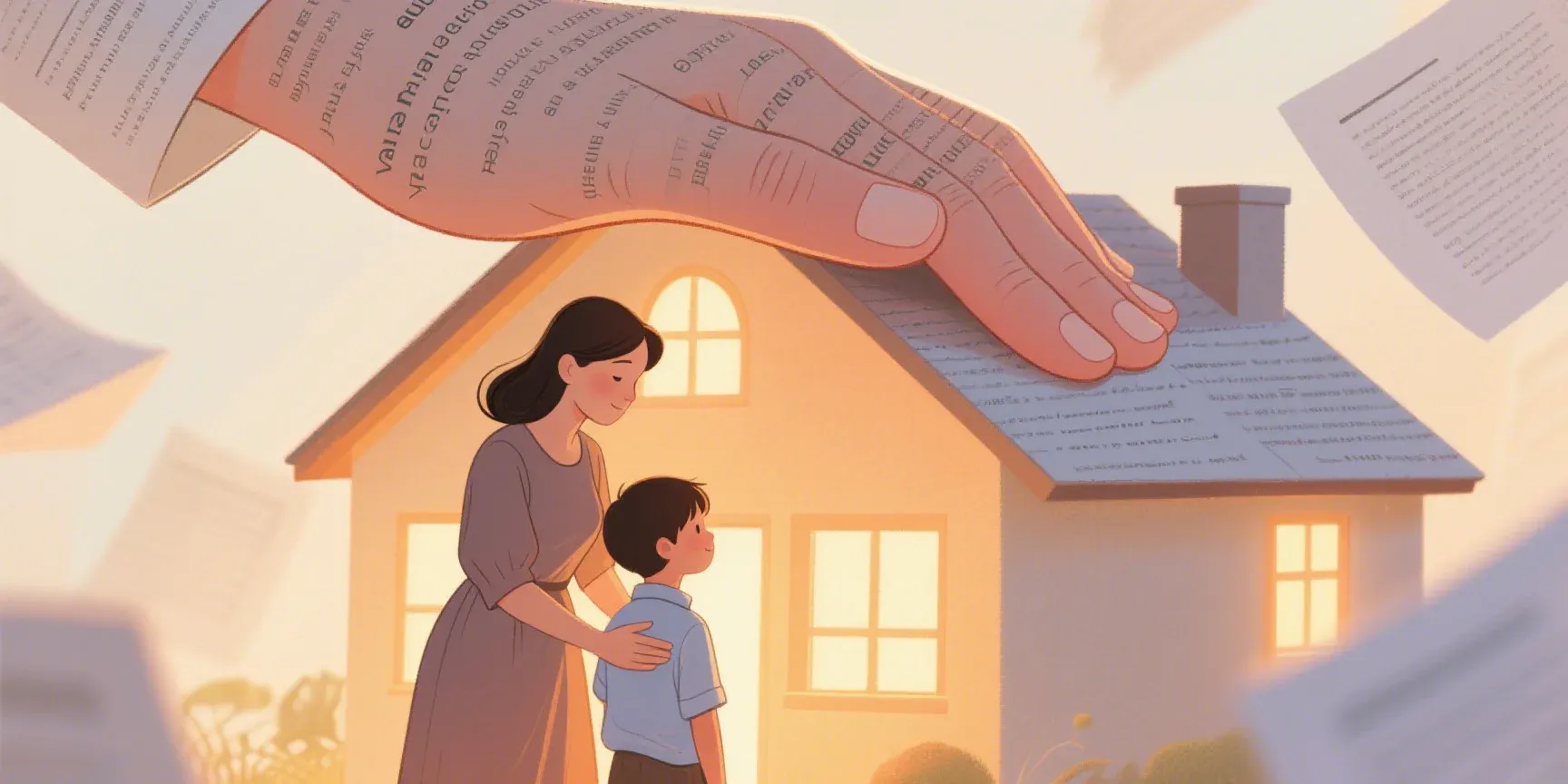
The Protection of Women from Domestic Violence Act, 2005: A Comprehensive Guide to Rights and Remedies
This comprehensive guide breaks down India's Protection of Women from Domestic Violence Act, 2005 (PWDVA), detailing the legal definition of abuse, the process for seeking justice, and the crucial rights and remedies available to women, including protection, maintenance, and residence in a shared household.
Domestic violence is a pervasive and grim reality in Indian society, a silent pandemic that thrives behind closed doors. For decades, legal recourse for victims, overwhelmingly women, was confined to the blunt instrument of criminal law or the slow-moving wheels of civil courts for divorce and maintenance. Recognizing this chasm, the Indian Parliament enacted the Protection of Women from Domestic Violence Act, 2005 (PWDVA), a landmark civil law designed to provide a holistic and accessible framework for justice. This legislation marked a paradigm shift, acknowledging that violence within the home is not a private family matter but a grave violation of human rights guaranteed under the Constitution.
This article provides a detailed exploration of the PWDVA, 2005, serving as a comprehensive guide for anyone seeking to understand its provisions. We will delve into what constitutes domestic violence, who is protected under this law, the step-by-step procedure for seeking justice, the wide array of reliefs a court can grant, and the transformative interpretations by the Supreme Court that have continuously expanded its protective umbrella.
Chapter 1: The Meaning of Domestic Violence: Beyond Physical Harm
One of the most significant contributions of the PWDVA is its broad and inclusive definition of “domestic violence” under Section 3 of the Act. It shatters the myth that abuse is only physical, recognizing the deep and lasting scars left by other insidious forms of harm. The law encompasses any act, omission, or conduct that harms, injures, endangers, or has the potential to do so. It is broken down into four distinct, yet often overlapping, categories:
Physical Abuse
This is the most visible form of domestic violence and is defined as any act or conduct that causes bodily pain, harm, or danger to life, limb, or health. It also includes acts that impair a person’s health or development. This isn’t limited to severe assaults; it includes a wide spectrum of actions such as:
- Slapping, hitting, punching, kicking, or pushing.
- Beating with any object.
- Forcing the use of drugs or alcohol.
- Denying medical care.
- Any act of criminal force or assault.
Sexual Abuse
The Act acknowledges that sexual violence can and does occur within domestic relationships. It defines sexual abuse as any conduct of a sexual nature that abuses, humiliates, degrades, or otherwise violates the dignity of a woman. This is a critical provision that includes, but is not limited to:
- Forced sexual intercourse, including marital rape (which is a ground for relief under this civil law).
- Coercing the woman to watch pornography or other obscene material.
- Any act of a sexual nature that is humiliating or degrading.
- Child sexual abuse.
Verbal and Emotional Abuse
The PWDVA gives legal recognition to the profound psychological damage caused by verbal and emotional torment. This form of abuse is characterized by a persistent pattern of behavior aimed at eroding a woman’s self-worth and mental peace. It includes:
- Insults, name-calling, and ridicule.
- Humiliation, especially regarding not having a child or a male child.
- Repeated threats to cause physical pain to the woman or anyone she cares about.
- Isolating the woman from her friends, family, and support systems.
- Constant criticism and belittling.
Economic Abuse
A cornerstone of the PWDVA is its recognition of economic abuse as a key tool of control and coercion in domestic settings. It is defined as depriving the woman of the financial resources she is entitled to or requires out of necessity. This can manifest in numerous ways, effectively trapping a woman in an abusive relationship by making her financially dependent. Examples include:
- Depriving the woman of food, clothing, and other basic necessities.
- Withholding money or giving a meager allowance.
- Forcibly taking her salary or earnings.
- Preventing her from seeking or continuing employment.
- Selling or disposing of her assets or stridhan (a woman’s own property) without her consent.
- Restricting her access to a joint bank account for household expenses.
- Forcing her to sign financial documents or take on debt in her name.
The Act wisely stipulates that the overall facts and circumstances of a case will be considered to determine if an act constitutes domestic violence.
Chapter 2: Who is Protected and Who Can Be Held Accountable?
The PWDVA casts a wide net to ensure that its protections are accessible to women in various domestic arrangements.
The ‘Aggrieved Person’
The law is designed to protect women. Under Section 2(a), an “aggrieved person” is any woman who is, or has been, in a domestic relationship with the person who has committed the violence (the respondent). This is not limited to wives; it includes:
- Mothers
- Sisters
- Daughters
- Women in live-in relationships
- Widows living in a joint family
The ‘Domestic Relationship’
A “domestic relationship,” as defined in Section 2(f), is a relationship between two people who live or have, at any point in time, lived together in a “shared household.” The relationship can be based on:
- Consanguinity: Relationship by blood (e.g., father-daughter, brother-sister).
- Marriage: This is the most common form of relationship covered.
- A relationship in the nature of marriage: This is a crucial inclusion that extends the Act’s protection to women in live-in relationships. The courts have laid down several factors to determine if a relationship is “in the nature of marriage,” such as the duration of cohabitation, presenting as a couple to society, having a sexual relationship, financial interdependence, and having children together.
- Adoption: For example, a relationship between an adoptive mother and son.
- Family members living together as a joint family.
The ‘Respondent’
Initially, the definition of a “respondent” in Section 2(q) was limited to an “adult male person.” However, this created a legal loophole where women could not seek relief against female relatives of their husband or partner who were often perpetrators or abettors of violence.
In the landmark case of Hiral P. Harsora v. Kusum Narottamdas Harsora (2016), the Supreme Court struck down the words “adult male” from this definition. This groundbreaking judgment means that an aggrieved woman can now file a complaint against any person, male or female, who is in a domestic relationship with her, including her mother-in-law, sister-in-law, or other relatives of her husband or male partner.
Chapter 3: The Right to a Roof—The Evolving Concept of a ‘Shared Household’
One of the most litigated and vital aspects of the PWDVA is the right of a woman to reside in a “shared household.” The fear of being rendered homeless is a major deterrent for women seeking to leave abusive situations. Section 17 of the Act grants every woman in a domestic relationship the right to reside in the shared household, irrespective of whether she has any right, title, or beneficial interest in it.
The definition of “shared household” in Section 2(s) has been the subject of significant judicial interpretation.
The Restrictive View: S.R. Batra v. Taruna Batra (2007)
Initially, in the S.R. Batra case, the Supreme Court adopted a very narrow interpretation. It held that a “shared household” would only mean a house belonging to the husband or one taken on rent by him, or a house belonging to the joint family of which the husband was a member. This interpretation excluded houses owned exclusively by in-laws, leaving many women without a right to residence if the property was registered in the name of their mother-in-law or father-in-law.
The Paradigm Shift: Satish Chander Ahuja v. Sneha Ahuja (2020)
Recognizing the injustice caused by the Batra judgment, a larger three-judge bench of the Supreme Court in Satish Chander Ahuja overruled the previous decision, calling its interpretation incorrect. This judgment radically expanded and clarified the meaning of “shared household” in line with the Act’s protective intent. The key takeaways from this landmark ruling are:
- The definition in the Act is exhaustive. A shared household is where the aggrieved person lives or has lived in a domestic relationship, either alone or with the respondent.
- It is not a requirement for the woman to have any ownership or tenancy rights in the property.
- The phrase “lives or at any stage has lived” implies a degree of permanence and is not meant to cover fleeting or casual stays.
- Crucially, a house owned by any relative of the husband (including his parents) where the woman lived as part of a domestic relationship, will be considered a “shared household.”
This judgment provides immense security to women, ensuring they cannot be summarily evicted from the home they have known and lived in, simply because they do not legally own it.
Chapter 4: A Step-by-Step Guide to Seeking Justice under Section 12
The PWDVA provides a simplified and accessible procedure for an aggrieved woman to approach the court for relief. This is laid out in Section 12 of the Act.
Step 1: Who Can File the Complaint? An application can be presented to a Magistrate by:
- The aggrieved woman herself.
- A Protection Officer (PO) on her behalf.
- Any other person, such as a social worker, relative, or friend, on behalf of the aggrieved woman.
The Role of the Protection Officer: The PO is a key functionary appointed by the State Government, often the first point of contact for a victim. Their duties include assisting the woman in filing the application, preparing a Domestic Incident Report (DIR) which details the violence, ensuring she gets access to legal aid, medical facilities, and shelter homes if needed, and helping enforce the court’s orders.
Step 2: Filing the Application The application, which can be in a prescribed format, should detail the nature of the domestic violence and specify the reliefs being sought. It can be filed in the court of a Magistrate within whose jurisdiction:
- The aggrieved person permanently or temporarily resides or carries on business or is employed.
- The respondent resides or carries on business or is employed.
- The cause of action has arisen.
Step 3: The Domestic Incident Report (DIR) Before passing any order, the Magistrate must consider any DIR received from the Protection Officer or a service provider. This report is an official record of the complaint and the circumstances of the violence.
Step 4: Court Proceedings The PWDVA is intended to be a fast-track law. Section 12(4) mandates that the Magistrate must fix the first date of hearing, ordinarily within three days of the application being filed. Furthermore, Section 12(5) directs the court to endeavor to dispose of every application within a period of sixty days from the date of its first hearing. While these timelines are often challenging to meet in practice, they underscore the legislative intent for speedy justice.
Chapter 5: The Arsenal of Reliefs: Orders the Court Can Grant
The PWDVA empowers the Magistrate to grant a wide range of reliefs to ensure the safety and well-being of the aggrieved woman. An application under Section 12 can seek one or more of the following orders:
1. Protection Orders (Section 18)
This is often the most immediate relief sought. A protection order is preventive in nature and prohibits the respondent from:
- Committing any act of domestic violence.
- Aiding or abetting the commission of domestic violence.
- Entering the woman’s place of employment or her child’s school.
- Attempting to communicate with her in any form (personal, telephonic, electronic, etc.).
- Selling or transferring assets or operating bank lockers without the court’s permission.
- Causing violence to her relatives or others who have assisted her.
2. Residence Orders (Section 19)
Linked to the right to a “shared household,” a residence order can:
- Restrain the respondent from dispossessing the woman from the shared household.
- Direct the respondent to remove himself from the shared household.
- Restrain the respondent or his relatives from entering the portion of the house where the woman resides.
- Direct the respondent to provide the same level of alternate accommodation for the woman or to pay rent for it.
3. Monetary Reliefs (Section 20)
The court can order the respondent to pay monetary relief to the woman to meet expenses and compensate for losses suffered due to the violence. This is a broad category that includes:
- Loss of earnings.
- Medical expenses.
- Loss caused by the destruction or removal of property.
- Maintenance for the woman and her children.
4. Custody Orders (Section 21)
The Magistrate can grant temporary custody of any child to the aggrieved woman. The court can also specify arrangements for the respondent to visit the child, but can refuse such visits if it is deemed harmful to the child’s interests.
5. Compensation Orders (Section 22)
In addition to monetary relief for expenses, the court can direct the respondent to pay compensation for the injuries, mental torture, and emotional distress caused by the acts of domestic violence.
6. Interim and Ex-parte Orders (Section 23)
Recognizing the urgency in many cases, the Act empowers the Magistrate to pass interim orders (temporary orders during the pendency of the case) and even ex-parte orders (orders passed without hearing the other side) if a prima facie case of domestic violence is made out and the court is convinced that the respondent is committing, or is likely to commit, an act of domestic violence.
Chapter 6: Key Legal Principles and Judicial Nuances
Retrospective Application of the Act
A crucial question that arose after the Act came into force in 2006 was whether it could apply to acts of violence that occurred before its enactment. The Supreme Court, in cases like V.D. Bhanot v. Savita Bhanot (2012) and Saraswathy v. Babu (2014), has held that the Act can be applied retrospectively. The reasoning is that the Act is intended to provide a remedy for ongoing harm and protect women from future violence, regardless of when the abuse began. The use of phrases like “is, or has been” in a domestic relationship and “live or have, at any point of time, lived” indicates the legislature’s intent to cover past acts of violence.
Rights of a Divorced Wife
Following the principle of retrospective application, courts have held that a subsequent decree of divorce does not absolve a respondent from his liabilities under the PWDVA for violence committed during the marriage. A divorced wife can file an application for reliefs like maintenance and compensation for violence she endured while the domestic relationship subsisted.
Distinction from Section 498A of the IPC
It is important to understand the difference between the PWDVA and Section 498A of the Indian Penal Code (IPC).
- PWDVA, 2005: This is a civil law. Its primary objective is to provide protection and remedies (like residence, maintenance, compensation) to the victim. The proceedings are quasi-civil.
- Section 498A IPC: This is a criminal law. It deals with “cruelty” by a husband or his relatives, primarily in the context of dowry, and aims to punish the offenders with imprisonment and a fine.
An aggrieved woman can pursue remedies under both laws simultaneously, as they provide for different types of relief.
Conclusion: A Shield for the Vulnerable
The Protection of Women from Domestic Violence Act, 2005, is more than just a piece of legislation; it is a declaration that the state will not remain a silent spectator to violence within the four walls of a home. It is a tool of social justice that provides a comprehensive and accessible legal framework for women to seek safety, security, and dignity. By offering a wide spectrum of civil remedies, from protection and residence orders to monetary relief and compensation, the Act provides a tangible shield for the vulnerable.
The progressive and expansive interpretations by the judiciary, particularly the Supreme Court, have been instrumental in breathing life into the Act’s provisions, ensuring that its protective umbrella extends to women in all kinds of domestic relationships and provides a meaningful right to a shared household. While challenges in implementation remain, the PWDVA stands as a powerful testament to India’s commitment to upholding the constitutional rights of women and moving towards a society free from domestic violence.
Frequently Asked Questions (FAQ)
1. Can a man file a case under the Domestic Violence Act, 2005? No. The PWDVA is specifically designed to protect women. The “aggrieved person” who can file a complaint must be a woman. However, some courts have allowed male petitioners in specific contexts, though the predominant legal position is that the law is for the protection of women. Men facing abuse can seek remedies under other laws, such as filing for divorce on grounds of cruelty or initiating proceedings under the Indian Penal Code.
2. Can I file a domestic violence case against my mother-in-law or sister-in-law? Yes. Following the Supreme Court’s decision in Hiral P. Harsora v. Kusum Narottamdas Harsora, a woman can file a complaint against any relative of her husband or male partner, including female relatives like a mother-in-law or sister-in-law.
3. I am in a live-in relationship. Am I protected under this Act? Yes. The Act explicitly covers a “relationship in the nature of marriage.” The Supreme Court has affirmed that women in such relationships are entitled to seek all reliefs available under the PWDVA.
4. Can I be thrown out of the house I live in with my husband if it is owned by his parents? No. After the Supreme Court’s landmark judgment in Satish Chander Ahuja v. Sneha Ahuja, a house owned by a husband’s relatives where you have lived together in a domestic relationship is considered a “shared household.” You have a right to reside there, and you cannot be evicted without due process of law. A court can pass a residence order to protect this right.
5. I was divorced two years ago but faced a lot of violence during my marriage. Can I still file a case? Yes. The courts have held that the Act applies to past acts of violence. A divorced woman can file a case against her ex-husband for acts of domestic violence that occurred when the domestic relationship existed.
6. What is the difference between a case under the PWDVA and Section 498A of the IPC? The PWDVA is a civil law focused on providing remedies like protection orders, residence, and maintenance. Section 498A IPC is a criminal law that punishes the husband or his relatives for cruelty with imprisonment and a fine. A woman can file cases under both laws simultaneously.
7. Do I need a lawyer to file a domestic violence case? While it is highly advisable to have a lawyer, it is not mandatory. An aggrieved woman can approach a Protection Officer or a registered Service Provider (like an NGO) who can help her file the application and the Domestic Incident Report (DIR) with the Magistrate. They can also help her access free legal aid.
8. What happens if the respondent violates a protection order? Breach of a protection order passed by the Magistrate is a criminal offense under Section 31 of the PWDVA. It is punishable with imprisonment for up to one year, a fine, or both.
9. How quickly can I get relief from the court? The Act is designed for speedy relief. The law requires the court to hold its first hearing within three days of the complaint and to try and decide the case within 60 days. The court can also grant immediate ex-parte interim orders to ensure the victim’s safety.
10. What is economic abuse? Can I get financial support? Economic abuse includes depriving you of money, preventing you from working, taking your salary, or selling your assets without your permission. Under the Act, you can seek “monetary relief” (Section 20), which can include maintenance for yourself and your children, compensation for loss of earnings, and medical expenses.


